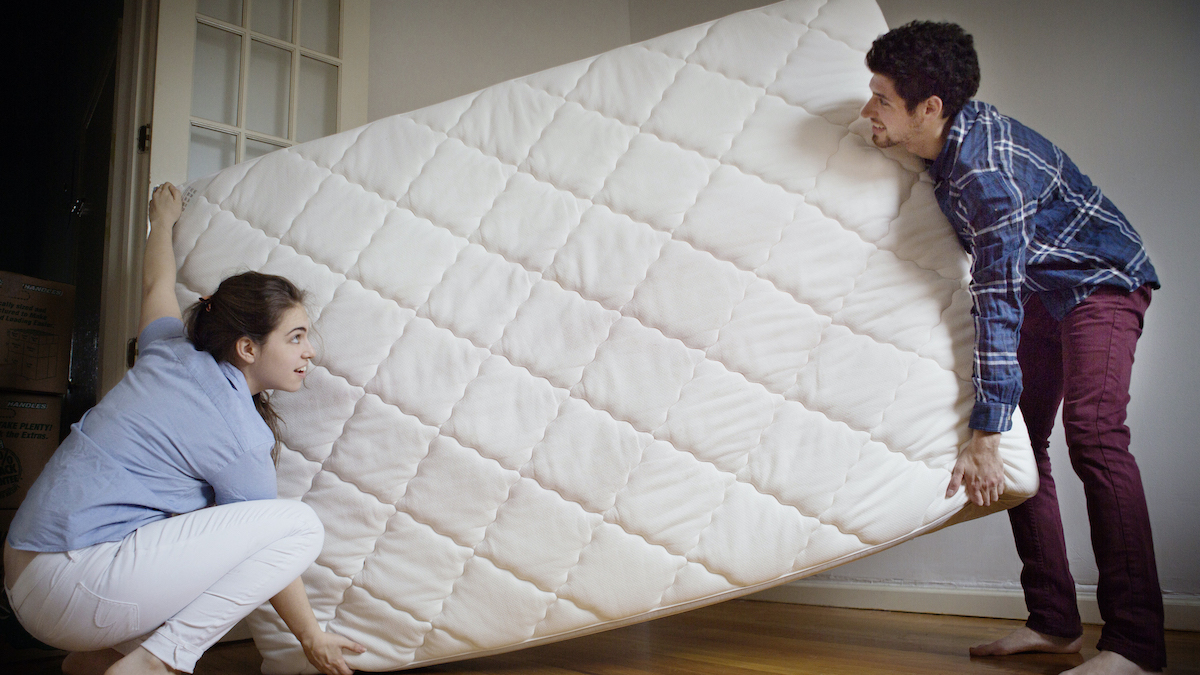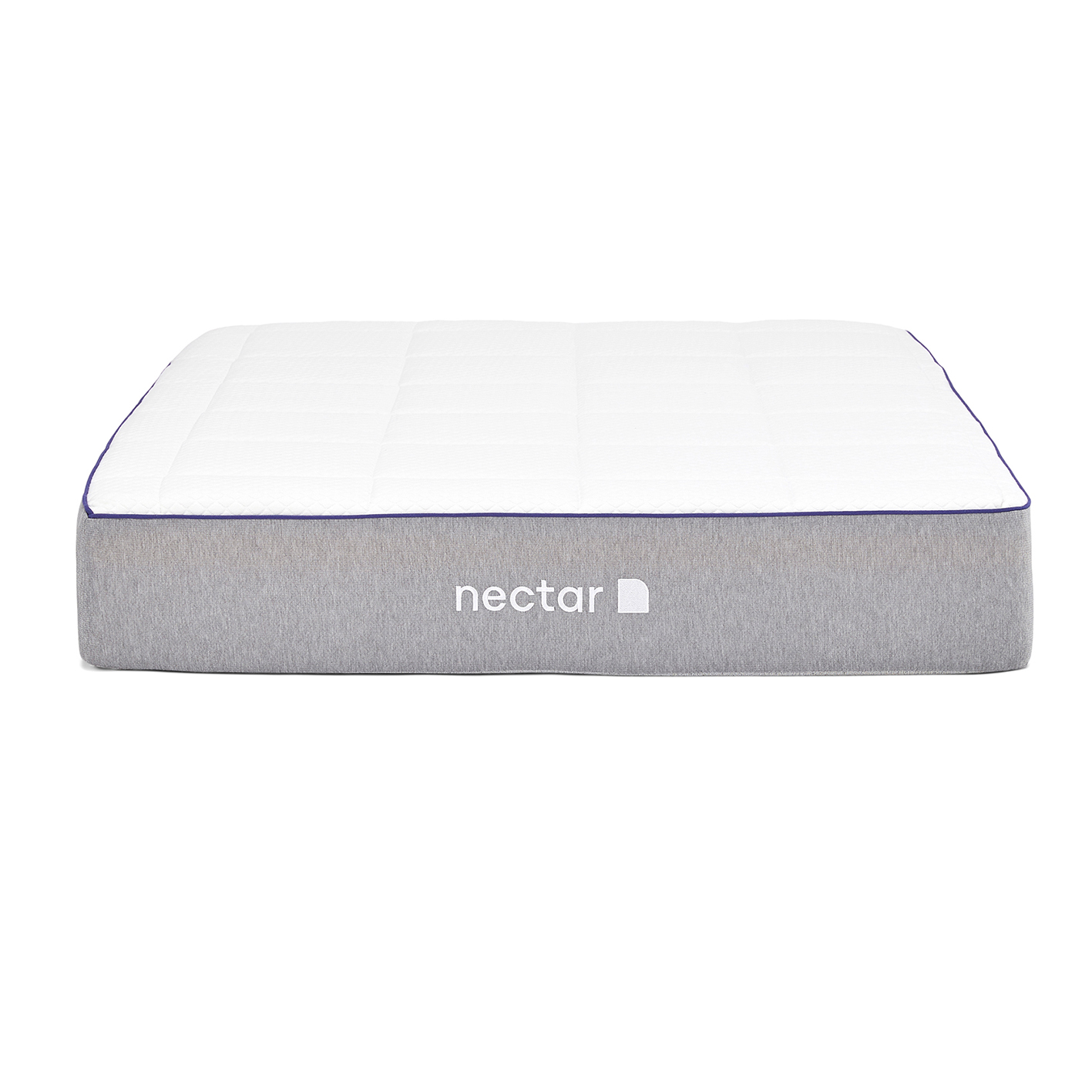This is how often you should change your mattress for healthy sleep
How often should you change your mattress is a common question, and the answer depends on what the mattress is made. Most have an average lifespan of six to eight years, but some of the very best mattresses (typically, those made from natural materials such as durable latex) last longer.
If yours is looking worse for wear, that’s just one sign that it needs upgrading. Have you slept on it for over seven years or you’re always waking up feeling achy? Those are bigger signs that you need something more supportive.
In this guide, we explain how long each type of mattress should last on average. We also look at the telltale signs that it’s time to change yours. And with all those early Black Friday mattress deals beginning to surface, now is actually a good time to nab a bargain.
How often should you change your mattress?
On average, here’s how long the following types of mattress last for, which should give you a good idea of how often you should replace them:
- Innerspring/pocket coil – five to seven years
- Hybrid – five to 10 years
- Memory foam – 10 years
- Natural latex – 15 to 25 years
- Synthetic latex – five to 10 years

Different mattress types have different lifespans, according to the materials used and how they are constructed. How often should you change your mattress also depends on how well you look it from the start, including regular cleaning and either rotating or flipping (as per the manufacturer's guidelines).
When premium and durable materials are used, you can expect the mattress to last at the longer end of the scale. The warranty (guarantee) is another good indicator of quality and potential lifespan too.
If a manufacturer offers a 10-year guarantee, for instance, then with proper care you shouldn't have to change the mattress for many years to come. Using one of the best mattress toppers can also extend your bed's lifespan.
How often should you change a memory foam mattress?
A premium memory foam mattress can last for around eight to 10 years, as this type of foam is more durable than basic foam. Also, if the mattress is all-foam then there’s less chance of certain layers or different components deteriorating quicker and compromising the overall quality of the mattress.
To keep your memory foam mattress in good condition, rotate it regularly and use a proper bed frame as recommended by the manufacturer.
If you are no longer getting proper pressure relief from yours, and you wake up with aches and pains, then it’s time to upgrade. The foam may also become softer and start to yellow over time, which are other signs that you need to change your mattress.
One of our top-rated memory foam models is made by Nectar. That's because it suits a range of body types and sleeping positions. It’s also fantastic value for money, and you can see the latest savings in our guide to the best Nectar Black Friday sales and early discounts.

How often should you change a hybrid mattress?
Hybrid mattresses are made of foam and springs, and can last around eight years depending on the quality of the components and how durable the core is.
Some high-end brands, such as Saatva in the US and Simba in the UK, use premium materials and guarantee their hybrids for up to 10 years. So you won't have to change these mattresses as often as cheaper foam models.
Because hybrids are built with a foundation layer and a softer top, they should never be flipped. If you do this, it could damage your mattress and void the warranty. They can be rotated though, unless there's specific zoning support inside.
The Saatva Classic (pictured) is our top pick of American hybrids. For the latest offers, use our guide to the best Saatva Black Friday mattress sales and early deals.
How often should you change a latex mattress?
Latex is durable, resilient and naturally antimicrobial, so it makes for a great-quality and longer lasting mattress. 100% natural latex mattresses (so those made with organic, Talalay or Dunlop latex) shouldn't need to be changed for more than 15 years if they are kept in good condition.
This means that despite the initial expense, a natural latex option could be economical in the long run, especially if you want to shop eco-friendly.

If the latex in the mattress is synthetic or blended with synthetic materials, you will have to change it every 10 years or so. Synthetic latex also softens faster than natural latex, so after five years or so of regular use, it might not support your posture as well as a natural latex option would.
How often should you change an innerspring mattress?
Spring mattresses are often the cheapest option, so they're more tempting to buy. This is a false economy though. Why? Because springs wear down quicker, which means your mattress will sag faster and within no time at all you won't have the spinal support you need in bed.
Most innerspring or pocket-spring mattresses need to be replaced every four to six years. There are higher-quality options from the likes of Silentnight and Dreams, and these are guaranteed to last a little longer because they use better quality wire and construction methods.
Innerspring mattresses are more traditional. These comprise a straightforward layer of springs, while pocket-spring (also called pocket-coil) mattresses feature springs individually encased in their own fabric pocket. Each coil moves independently, so the mattress offers better support and less motion transfer than an innerspring.

Signs that it's time to change your mattress
There are certain situations and scenarios where you would benefit from changing your mattress to something new. These include the following:
Your body has changed – If you weight has increased since you first bought your mattress and you now find it too soft, pick a firmer option for better support. If it has decreased and your mattress now feels too hard, pick a softer model that cushions your main pressure points (hips, back and shoulders).
You’re waking up with a sore back – Sagging mattresses cause sore backs and necks, plus joint pain. Look for one with zoned support from top to toe, but if your back pain is severe, ask a physiotherapist for recommendations first.
You’re hot and bothered – Not only does sweat cause mattress staining, but sleeping hot is a breeding ground for dust mites (they love humid environments). Thankfully, many mattresses now use cooling technologies and antimicrobial materials like copper to combat hot sleeping and pesky mites.
You’re sneezing and coughing more – If you’re waking up or unable to sleep because of coughing, itching and sneezing, your ageing mattress could be to blame.
With years of build-up to feast upon, dust mites can trigger allergies. They love snacking on dead skin cells, then leaving droppings that aggravate your allergies.
Your mattress is ripped, worn and yellowing – A worn-out mattress with rips and dips won't support you and will be a haven for dust-mites and bacteria. A yellowing mattress is a big indicator that it’s way past its prime too, as while yellowing naturally happen with age, it could also be due to a build-up of sweat and spills.

How to help your mattress last longer
Once you’ve replaced your old mattress, there are some things you should do to keep it in great condition for longer. This includes:
Rotating – Most mattresses can be rotated, and doing so ensures any dips and bumps are levelled out, and that you are resting on an even surface. Aim to rotate yours every few months. Mattresses with ‘zones’ that support the body at specific areas can't be rotated, as these are designed to be used in one direction only.
Flipping – A lot of new mattresses are one-sided with a sturdy foundation layer and a softer top, so check before you flip. If you can flip your mattress, flip and rotate it so that each side and end gets the same amount of time at the top of the bed.
Airing and cleaning – Most beds can be kept fresh by running the vacuum cleaner over them. You could also sprinkle on bicarbonate of soda to soak up moisture and smells, leave for a few hours, then vacuum it up. If you can, strip the mattress, open the windows and place it in direct sunlight for UV rays to kill the bacteria.
Protection – Using a mattress protector is one of the easiest ways to keep your mattress in good condition. Not only does they add a barrier against spills and sweat, protectors can be easily machine washed.

Nectar mattress sale: save up to 40% at Nectar Sleep
Looking for a new mattress? The Nectar Memory Foam is one of our top picks because it's comfy and great value for money. UK sleepers can now save 40%, with prices from £341.40 (was £569). In the US you’ll save $100 and get $399 of free gifts, with prices from $499. You’ll get 365 nights to try it too, and it has a lifetime warranty.
This article is part of TechRadar's Sleep Week 2021 (running from Sunday 31 October to Sunday 7 November), our in-depth look at sleep and how to snooze better. We've teamed up with experts in their field to bring you sleep techniques and tips to help you drift off easier, and have rounded-up the best sleep kit to transform your bedroom into a den of zen.
Contributer : Techradar - All the latest technology news https://ift.tt/3pXVu8W

 Reviewed by mimisabreena
on
Thursday, November 04, 2021
Rating:
Reviewed by mimisabreena
on
Thursday, November 04, 2021
Rating:













No comments:
Post a Comment